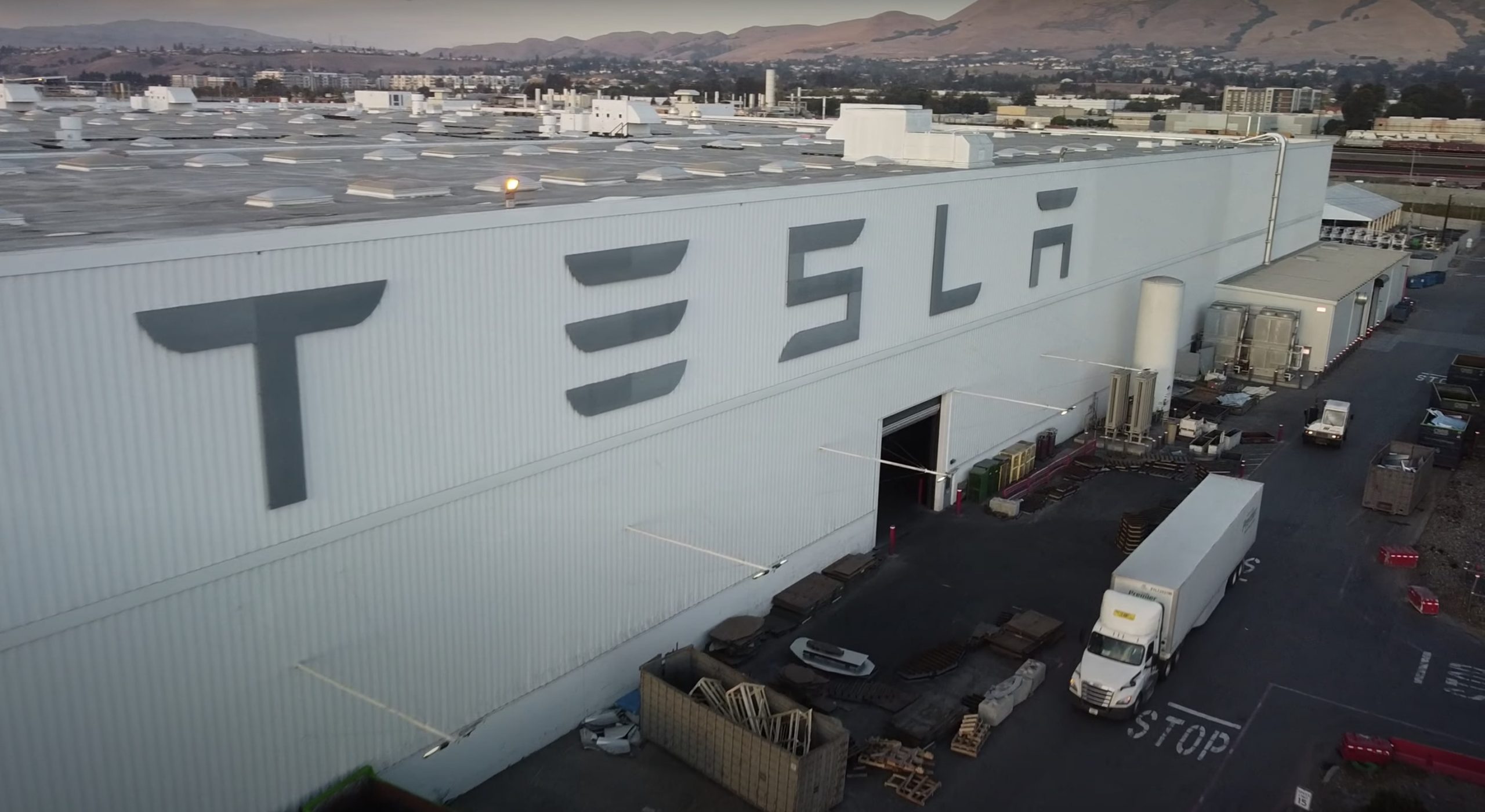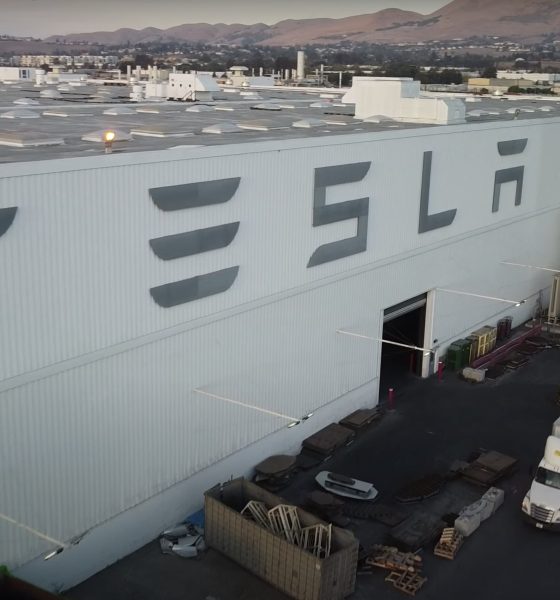New Street Research managing partner Pierre Ferragu recently explained why Tesla’s (NASDAQ:TSLA) EV credits is only icing on the cake for the electric car maker. Tesla reported a revenue of $8.771 billion with a net income of $331 million in Q3, with regulatory credits accounting for $397 million of the EV maker’s earnings.
When asked about how regulatory credits have boosted Tesla’s numbers this year, Ferragu told Fox Business that the EV credits aren’t a big part of the electric car maker’s future valuation at all. This is partly due to regulatory credits being short-term, and Tesla’s vehicle margins.
“Why are you looking at profits of this year? You know Tesla is trading on maybe, like over 100x that, more than 100x that, so that’s not reason to drive our valuation of TSLA. What really matters is how much profit Tesla makes in 2025, in 2030. We’ve had a string of conversations about that,” said Ferragu.
He explained his stance further, saying: “So, to give you a sense of that, in 2025, I have Tesla making $16 of earnings per share just out of the auto business. And in that, there’s absolutely no credit revenues. We don’t have credit revenues in our model. Credit revenues are very short-term, have a very short duration, so you arrive at about $1.5 billion in pure profit this year. So that’s like free money Tesla gets and Tesla will be able to reinvest in their business.”
A big portion of Tesla’s EV credits come from its Fiat pooling deal which was estimated to be worth $1.8 billion through 2023 by Baird analyst Ben Kallo. Recently, Honda joined Tesla’s pooling deal with Fiat Chrysler Automobiles (FCA), probably increasing TSLA’s profitability with EV credits.
Many TSLA bulls, specifically retail investors who have accumulated a good number of shares over the years, agree with Ferragu’s assessment of Tesla’s use of EV credits. As TSLA Bull @stevenmarkryan explained, EV credits are more of a byproduct of Tesla doing what it is already doing. During his interview with Fox Business, Ferragu strived to explain Tesla’s profitability without EV credits on the table.
“But that money is going away relatively rapidly in the next three or four years. And that’s not part of the overall picture. What really matters today is to look at the gross margins of Tesla excluding the regulatory credits. And excluding credits, Tesla’s gross margins is about 20%, it’s a leading gross margin for a car manufacturer. And it continues to expand as the Model Y is a higher margin, the Model Y is included in the mix. That’s what really matters, and credits have nothing to blame there,” Ferragu said.
Morgan Stanley recently raised its price target for TSLA to $540. “Mine is a tad above that. It’s $578. They’re getting closer to the truth,” Ferragu commented during his interview.
In October, Ferragu released a New Street Research analysis on Tesla and set his $578 TSLA price target for the company. The analysis hinted at a decade of hyper-growth for Tesla. In it, Ferragu and his fellow analysts estimated that Tesla had an addressable market of 20 million units. The S3XY lineup directly addressed 8 million units with an additional “trading up” opportunity of 12 million units. The Cybertruck added an extra 3 million units to the equation.
Recently, Tesla joined the Zero Emission Transportation Association (ZETA) along with 28 other companies, like Rivian, Duke Energy, Seimens, and Lucid Motors. ZETA wants to reach 100% EV adoption by 2030 in the United States. In Europe, the EU Commission plans to enforce stricter emission standards that could kill the combustion engine by 2025. Other countries seem be preparing for an EV-lead auto industry as well, which could bring about Tesla’s hyper-growth in the next decade.

Elon Musk
Delaware Supreme Court reinstates Elon Musk’s 2018 Tesla CEO pay package
The unanimous decision criticized the prior total rescission as “improper and inequitable,” arguing that it left Musk uncompensated for six years of transformative leadership at Tesla.

The Delaware Supreme Court has overturned a lower court ruling, reinstating Elon Musk’s 2018 compensation package originally valued at $56 billion but now worth approximately $139 billion due to Tesla’s soaring stock price.
The unanimous decision criticized the prior total rescission as “improper and inequitable,” arguing that it left Musk uncompensated for six years of transformative leadership at Tesla. Musk quickly celebrated the outcome on X, stating that he felt “vindicated.” He also shared his gratitude to TSLA shareholders.
Delaware Supreme Court makes a decision
In a 49-page ruling Friday, the Delaware Supreme Court reversed Chancellor Kathaleen McCormick’s 2024 decision that voided the 2018 package over alleged board conflicts and inadequate shareholder disclosures. The high court acknowledged varying views on liability but agreed rescission was excessive, stating it “leaves Musk uncompensated for his time and efforts over a period of six years.”
The 2018 plan granted Musk options on about 304 million shares upon hitting aggressive milestones, all of which were achieved ahead of time. Shareholders overwhelmingly approved it initially in 2018 and ratified it once again in 2024 after the Delaware lower court struck it down. The case against Musk’s 2018 pay package was filed by plaintiff Richard Tornetta, who held just nine shares when the compensation plan was approved.
A hard-fought victory
As noted in a Reuters report, Tesla’s win avoids a potential $26 billion earnings hit from replacing the award at current prices. Tesla, now Texas-incorporated, had hedged with interim plans, including a November 2025 shareholder-approved package potentially worth $878 billion tied to Robotaxi and Optimus goals and other extremely aggressive operational milestones.
The saga surrounding Elon Musk’s 2018 pay package ultimately damaged Delaware’s corporate appeal, prompting a number of high-profile firms, such as Dropbox, Roblox, Trade Desk, and Coinbase, to follow Tesla’s exodus out of the state. What added more fuel to the issue was the fact that Tornetta’s legal team, following the lower court’s 2024 decision, demanded a fee request of more than $5.1 billion worth of TSLA stock, which was equal to an hourly rate of over $200,000.
Delaware Supreme Court Elon Musk 2018 Pay Package by Simon Alvarez
News
Tesla Cybercab tests are going on overdrive with production-ready units
Tesla is ramping its real-world tests of the Cybercab, with multiple sightings of the vehicle being reported across social media this week.

Tesla is ramping its real-world tests of the Cybercab, with multiple sightings of the autonomous two-seater being reported across social media this week. Based on videos of the vehicle that have been shared online, it appears that Cybercab tests are underway across multiple states.
Recent Cybercab sightings
Reports of Cybercab tests have ramped this week, with a vehicle that looked like a production-ready prototype being spotted at Apple’s Visitor Center in California. The vehicle in this sighting was interesting as it was equipped with a steering wheel. The vehicle also featured some changes to the design of its brake lights.
The Cybercab was also filmed testing at the Fremont factory’s test track, which also seemed to involve a vehicle that looked production-ready. This also seemed to be the case for a Cybercab that was spotted in Austin, Texas, which happened to be undergoing real-world tests. Overall, these sightings suggest that Cybercab testing is fully underway, and the vehicle is really moving towards production.
Production design all but finalized?
Recently, a near-production-ready Cybercab was showcased at Tesla’s Santana Row showroom in San Jose. The vehicle was equipped with frameless windows, dual windshield wipers, powered butterfly door struts, an extended front splitter, an updated lightbar, new wheel covers, and a license plate bracket. Interior updates include redesigned dash/door panels, refined seats with center cupholders, updated carpet, and what appeared to be improved legroom.
There seems to be a pretty good chance that the Cybercab’s design has been all but finalized, at least considering Elon Musk’s comments at the 2025 Annual Shareholder Meeting. During the event, Musk confirmed that the vehicle will enter production around April 2026, and its production targets will be quite ambitious.
News
Tesla gets a win in Sweden as union withdraws potentially “illegal” blockade
As per recent reports, the Vision union’s planned anti-Tesla action might have been illegal.

Swedish union Vision has withdrawn its sympathy blockade against Tesla’s planned service center and showroom in Kalmar. As per recent reports, the Vision union’s planned anti-Tesla action might have been illegal.
Vision’s decision to pull the blockade
Vision announced the blockade in early December, stating that it was targeting the administrative handling of Tesla’s facility permits in Kalmar municipality. The sympathy measure was expected to start Monday, but was formally withdrawn via documents sent to the Mediation Institute and Kalmar Municipality last week.
As noted in a Daggers Arbete report, plans for the strike were ultimately pulled after employer group SKR highlighted potential illegality under the Public Employment Act. Vision stressed its continued backing for the Swedish labor model, though Deputy negotiation manager Oskar Pettersson explained that the Vision union and IF Metall made the decision to cancel the planned strike together.
“We will not continue to challenge the regulations,” Petterson said. “The objection was of a technical nature. We made the assessment together with IF Metall that we were not in a position to challenge the legal assessment of whether we could take this particular action against Tesla. Therefore, we chose to revoke the notice itself.”
The SKR’s warning
Petterson also stated that SKR’s technical objection to the Vision union’s planned anti-Tesla strike framed the protest as an unauthorized act. “It was a legal assessment of the situation. Both for us and for IF Metall, it is important to be clear that we stand for the Swedish model. But we should not continue to challenge the regulations and risk getting judgments that lead nowhere in the application of the regulations,” he said.
Vision ultimately canceled its planned blockade against Tesla on December 9. With Vision’s withdrawal, few obstacles remain for Tesla’s long-planned Kalmar site. A foreign electrical firm completed work this fall, and Tesla’s Careers page currently lists a full-time service manager position based there, signaling an imminent opening.










